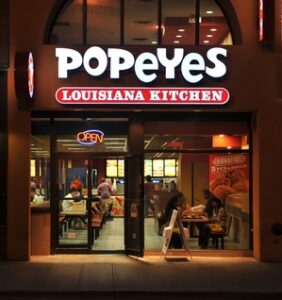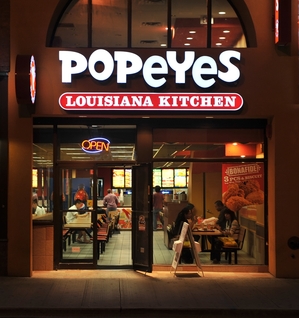
 Popeyes Louisiana Chicken finally owns its recipes for chicken and biscuits. According to a recent bizjournals article, Popeyes paid the family of its founder, Al Copeland, $43 million for the copyright to the core recipes for its famously spicy food. Previously, the company had been paying $3.1 million in royalties to the family each year. The company will still continue to pay royalties to the Copeland family for the sauces.
Popeyes Louisiana Chicken finally owns its recipes for chicken and biscuits. According to a recent bizjournals article, Popeyes paid the family of its founder, Al Copeland, $43 million for the copyright to the core recipes for its famously spicy food. Previously, the company had been paying $3.1 million in royalties to the family each year. The company will still continue to pay royalties to the Copeland family for the sauces.
“With the cooperation of the Copeland family, this transaction now brings important intellectual property — Popeyes’ core recipes — under brand ownership for the first time in our company’s history,” Popeyes Louisiana Chicken CEO Cheryl Bachelder said in a statement.
“The purchase eliminates the $3.1 million annual royalty that was previously scheduled to be paid by the company until 2029. The supply terms beyond 2029 were uncertain. Popeyes now owns its recipes in perpetuity for use worldwide and has clarity of supply and pricing terms through the balance of the supply agreement.”
Under Bachelder’s leadership, the company has recently added new restaurants and updated its advertising campaign. Popeyes’ latest quarterly report boasted a profit of $11.1 million, up from $9.6 million year-over-year. With more than 2,000 locations, the chain ranks behind only KFC and Chick-fil-A in the fast-food chicken sector.
Strauss Troy Attorney Kris Brandenburg explains that the Popeyes recipe acquisition demonstrates the importance of protecting all aspects of a company’s intellectual property bundle, even the most unexpected ones. “While most businesses are generally familiar with copyrights, trademarks, and patents, many businesses fail to appreciate the scope of their intellectual property portfolio. Copyright protects original works fixed in a tangible form, but it’s much more than your logo. Similarly, while trademark protects your brand name, it can also protect many non-obvious branding elements such as package design, decor or even the design and layout of a retail store. But you must take specific steps to protect these portions of your intellectual property portfolio. A qualified professional can help.”

